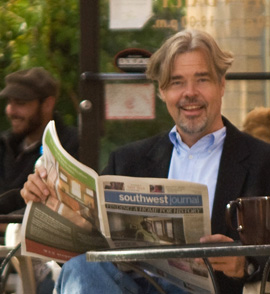Once upon a time, a new list identifying the top U.S. cities for walking would generate no more excitement than the roster of all-time greatest shortstops playing for the Toledo Mud Hens.
Indeed, some would have argued that rating American cities on walkability makes no more sense than ranking the best swimming beaches in Greenland.
But it’s a different story now that walking is associated with attractive urban traits like community spirit, environmental quality, convenient mobility and an overall sense of fun. Indeed the urban scholar Christopher Leinberger sparked controversy a few years back when he ranked the Washington D.C. region ahead of the New York region for walkability in his book The Option of Urbanism .
Well, New York’s back on top in the much-discussed Walkscore ranking of walkability , nosing out San Francisco. Washington tumbled down to No. 7 on this list, which looks at the 50 largest cities, not metropolitan areas.
Walkscore bases its rating on an algorithmic model that measures proximity to amenities such as grocery stores, coffee shops, schools, shopping, parks, restaurants, bars, banks and bookstores. Their website lets you type in an address to find the walkscore of any spot in the U.S. and Canada.
And now—drumroll, please—here are the U.S. winners.
- New York City 85.3
- San Francisco 84.9
- Boston 79.2
- Chicago 74.3
- Philadelphia 74.1
- Seattle 73.7
- Washington D.C. 73.2
- Miami 72.5
- Minneapolis 69.3
- Oakland 68.2
Miami is the chief surprise in the Top 10, while Portland, Oregon (No. 12) looks conspicuous by its absence. An even bigger surprise is No. 11—Long Beach, California, which shows that Southern California is not a palm-dotted wasteland when it comes to pedestrians. And Stop the Presses!—L.A. finishes 13th.
When you expand the list to include all cities, New York takes a backseat to three of its suburbs—Hoboken (92), Union City (92), West New York (90) and stands just a tenth of a point higher than Jersey City. Three other suburbs–Cambridge, Massachusetts (88.8), Albany, California (86) and West Hollywood, California (89)– also beat out New York City.
Actually, in many states the most walkable community is not a big city, but an inner-ring suburb. This should stamp out the notion, once and for all, that walking is only for urbanites. Or, at least, we should redefine our definition of urban to include foot-friendly suburbs.
Walkscore also breaks out the top neighborhoods for walking—17 of the top 20 are found in Manhattan. Little Italy leads the list, with the only outliers being Haymarket in Boston (No. 5), Chinatown in San Francisco (No. 15) and Printers Row in Chicago (No. 16). Places you might not expect in the Top 60 walkable neighborhoods are downtown Santa Barbara, downtown Charlottesville, Horton Plaza in San Diego, the Central Business District in Denver and City Center in Dallas.
What about the worst places to walk? Jacksonville (Florida), Charlotte and Oklahoma City bring up the rear among large cities with scores under 36. Three Florida cities—Palm Bay, Port St. Lucie and Cape Coral—are among the rock-bottom 4 of all cities over 100,000.
The Walkscore rankings are a welcome addition to the growing discussion about the importance of walkability. Unlike many other rankings, Walkscore uses statistical data, not just “qualitative” judgments from city-loving observers like me.
At the same time, any mathematical model is going to be inexact. When I punched in my home address, I was surprised to see it measuring 62, seven points below the overall Minneapolis score.
That surprised me, so I investigated further to find that all amenities are treated equal in the numbers crunching process. A tot lot playground scores the same as lakeside park that offers swimming, ice skating, floral gardens and nightly concerts at a bandshell. The same goes for a McDonald’s compared to a Cheers-like neighborhood pub “where everybody knows your name.” (As you might guess, my neighborhood features the lake and the pub.)
My Shareable colleague Neal Gorenflo also points out, “Walkscore is really cool, but it doesn’t measure the commons perspective.” A walkable neighborhood is desirable not only because you have these great amenities nearby, but because the opportunity to walk instills a greater sense of community—you get to meet your neighbors as you are heading to the grocery store or even the fast food joint. That creates a community that is more cohesive, inclusive and enjoyable.
It’s not Walkscore’s fault that the rich complexities of human interaction cannot be tallied in a computer program. I’ve talked with them, and I know they care about those values as much as I do. But it’s good to remember, as Albert Einstein said, “Not everything that counts can be counted.”
So having said that, I am now going to leave my sweltering office at home to take a plunge into Lake Harriet, just a short walk away. And who knows, I may stop in at King’s, one of my local pubs, where at least a few folks know my name.









